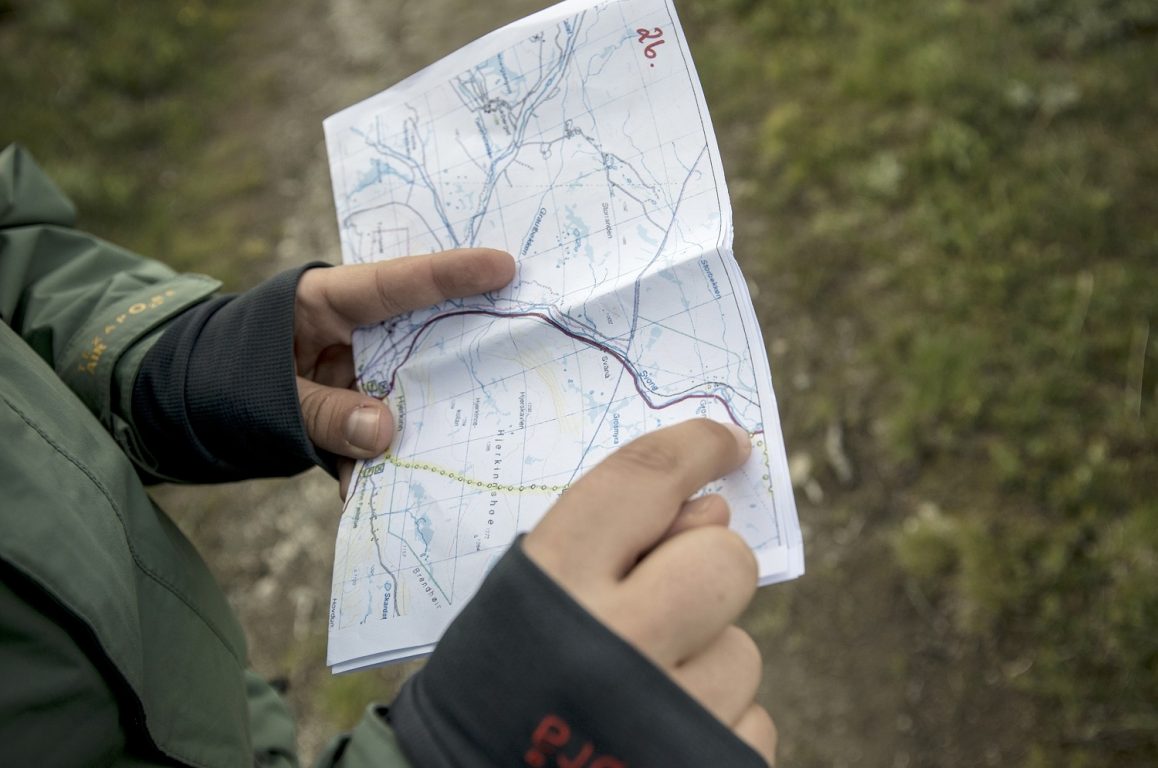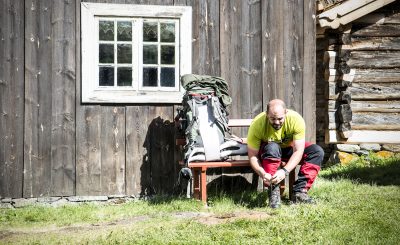25 items to bring on your pilgrimage if you plan to sleep indoors
On a pilgrimage through Norway, you spend most of your day in nature, often in changing weather. Here is a suggesten packing list if you plan to stay at hotels and hostels rather than sleeping in a tent.

Ria Warmerdam from the Netherlands has become a very experienced pilgrim after walking more than 4000 km. In addition, she has written a Dutch guidebook about the Gudbrandsdalsleden path. She has several good tips on what you should bring on a pilgrimage where you will be staying at guest houses or hostels along the way. Her most important advice is simple, – Bring as little as possible!
When packing, she weighs everything and packs her bag several times. Every item is carefully considered, and if she is in doubt about the necessity of the item, she chooses to leave it at home. Her backpack weighs around 10-11 kg and that, she says, is more than enough for her.

Test the bag in advance
– It is a good idea to test how much you can carry before you start, sais Ria. – Try to walk for a full day (8-9 hours) in your local area with the backpack on. If you feel tired, you want to consider that you'll be walking a similar distance every day for the duration of the journey. Then you might realize that there are certain things you can easily do without, smiles Ria.
Packing list for pilgrim walks in Norway (if you plan to sleep indoors)
- Backpack with rain cover (waterproof packing bags are also useful).
- Hiking boots (good, sturdy ones) that are already broken in, and light shoes/sandals for evening use.
- 2 t-shirts and 1 thin long-sleeve shirt (wool or wool blend is recommended).
- Warm mid-layer (sweater or jacket).
- Hiking pants, and thermal long johns if you’re crossing mountain areas.
- 3 sets of underwear and one set of swimwear.
- 3 pairs of wool socks (two thin pairs, one medium-thick pair).
- Lightweight windproof jacket.
- Waterproof jacket (or a rain poncho).
- Waterproof pants.
- Hat/cap. If you’re walking across mountain areas, bring mittens, a hat/beanie and a scarf.
- Sunglasses.
- Small towel.
- Bed sheet bag (liner).
- Toiletries in small containers (soap, toothbrush, foot/body/sunscreen, insect repellent etc).
- Small first aid kit (sports tape, blister plasters, painkillers, etc.).
- Credit card and some cash.
- Water bottle and small thermos with cup.
- Pocketknife and spork (spoon and fork combo).
- Mobile phone with charger.
- Map in a waterproof map case.
- Pilgrim passport (not mandatory, but beneficial).
- Some toilet paper and a trash bag (but remember not to leave anything in nature).
- Some duct tape and cable ties (can fix almost anything).
- Food supplies for at least one day.
These items can also be useful to bring:
- Compass and/or GPS, especially if you’re crossing mountains. Some remote areas in Norway doesn't have mobile coverage.
- Guidebook. But keep in mind that information about accommodation, etc., may become outdated. You'll find updated information about accommodation in the digital map.
- Trekking poles, to reduce strain on the knees.
- Power bank.
- A small sitting pad.
- Notebook and pen.

Tips!
- Make sure your backpack fits you well, sits comfortably, and has padded shoulder straps and a hip belt.
- Your boots must be broken in.
- There is plenty of good second-hand hiking gear — you don’t always need to buy new.
- Choose clothing and equipment that are durable and high quality. The longer you use your gear, the better it is for the environment.
- Read up on safety precautions on a pilgrimage through Norway.

